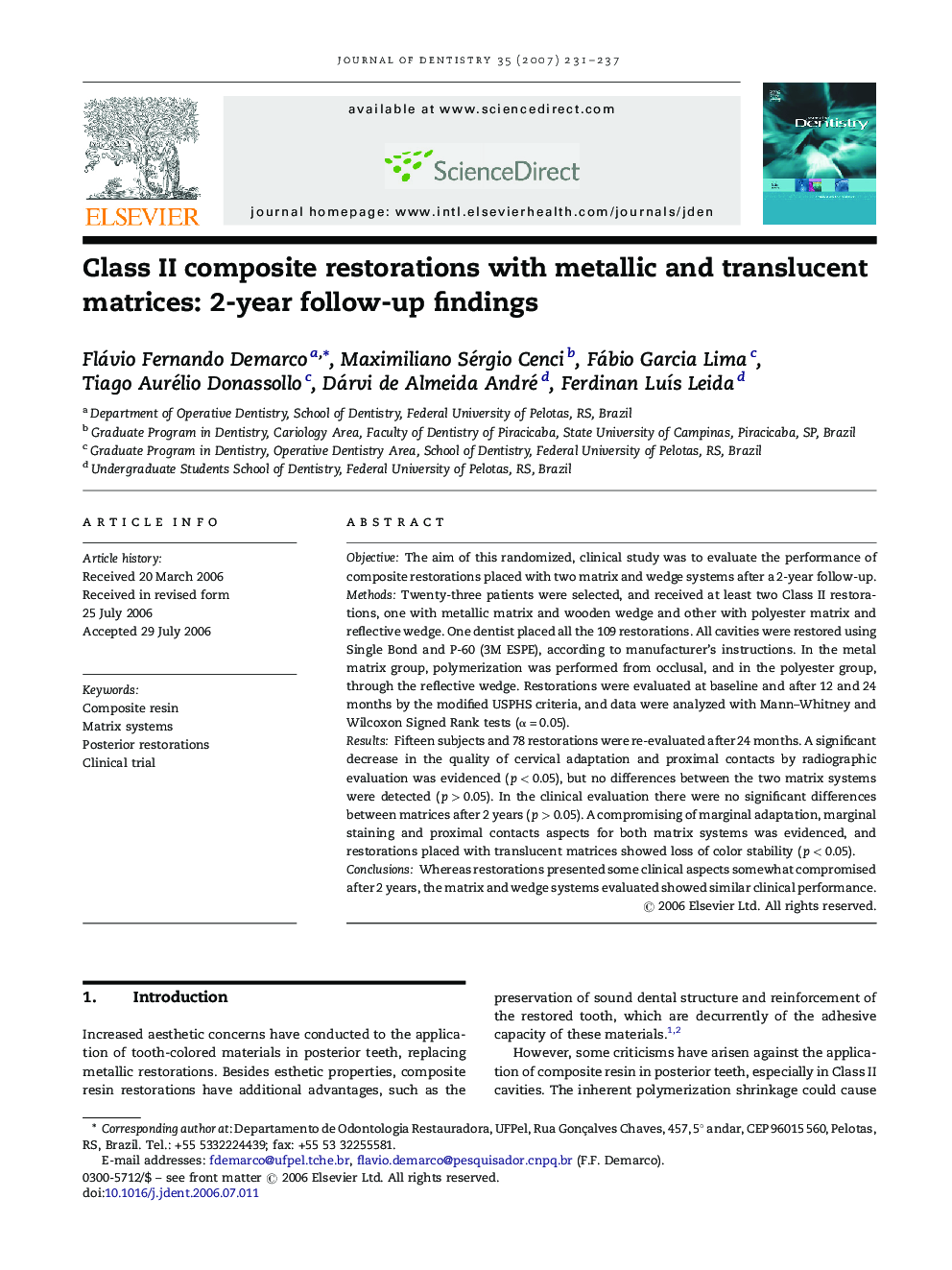| Article ID | Journal | Published Year | Pages | File Type |
|---|---|---|---|---|
| 3146164 | Journal of Dentistry | 2007 | 7 Pages |
ObjectiveThe aim of this randomized, clinical study was to evaluate the performance of composite restorations placed with two matrix and wedge systems after a 2-year follow-up.MethodsTwenty-three patients were selected, and received at least two Class II restorations, one with metallic matrix and wooden wedge and other with polyester matrix and reflective wedge. One dentist placed all the 109 restorations. All cavities were restored using Single Bond and P-60 (3M ESPE), according to manufacturer's instructions. In the metal matrix group, polymerization was performed from occlusal, and in the polyester group, through the reflective wedge. Restorations were evaluated at baseline and after 12 and 24 months by the modified USPHS criteria, and data were analyzed with Mann–Whitney and Wilcoxon Signed Rank tests (α = 0.05).ResultsFifteen subjects and 78 restorations were re-evaluated after 24 months. A significant decrease in the quality of cervical adaptation and proximal contacts by radiographic evaluation was evidenced (p < 0.05), but no differences between the two matrix systems were detected (p > 0.05). In the clinical evaluation there were no significant differences between matrices after 2 years (p > 0.05). A compromising of marginal adaptation, marginal staining and proximal contacts aspects for both matrix systems was evidenced, and restorations placed with translucent matrices showed loss of color stability (p < 0.05).ConclusionsWhereas restorations presented some clinical aspects somewhat compromised after 2 years, the matrix and wedge systems evaluated showed similar clinical performance.
